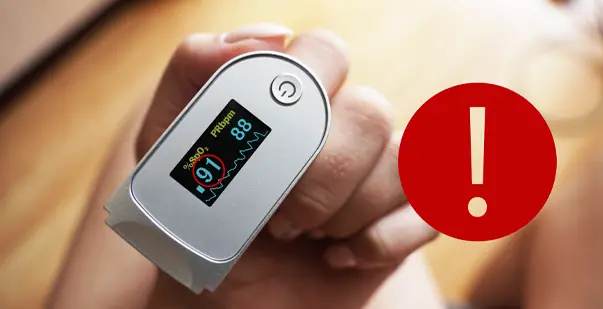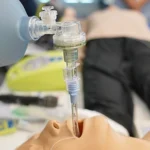
- Last Updated On: September 4, 2024
Prevent Hypoxia: Diagnosis, Treatment and More
Table of Content
- Introduction
- What is Hypoxia?
- Types of Hypoxia
- Causes of Hypoxia
- Symptoms of Hypoxia
- Diagnosis of Hypoxia
- Treatment of Hypoxia
- Complications of Hypoxia
- How to prevent Hypoxia?
- Hypoxia in special populations
- The future of Hypoxia management
- Key Takeaways
Hypoxia occurs when your body’s tissues don’t get enough oxygen, even if blood is flowing well. In hypoxia, the blood’s oxygen saturation falls below 60 mm Hg. However, normal oxygen saturation should be between 95 and 100%. If not treated early, hypoxia can lead to complications, and any part of your body can be affected. You must detect the problem earlier and take suitable treatment to avoid complications.
You should know what causes it, what the symptoms are, and how it’s diagnosed. It’s also essential to find out how to prevent hypoxia and the treatment options. Let’s look at all these things closely to give you a complete picture of Hypoxia.
What is Hypoxia?
Oxygen deprivation in the cells and tissues of your body leads to Hypoxia. As a result, your body doesn’t function properly. If your oxygen level falls below 85%, you may experience serious hypoxia issues.
Oxygen is vital for your cells to produce energy. Without enough oxygen, your cells can’t work well, leading to tissue damage and potentially life-threatening problems. Hypoxia generally occurs due to problems in your lungs, but any heart condition or sudden injury may also cause it. e.
Types of Hypoxia
In medicine, hypoxia is classified based on the causes that make tissues starvedstarve of oxygen. Therefore, knowing the types of hypoxia is important to understanding how to treat it. Some common types are as follows:
- Hypoxic Hypoxia: This happens when there’s not enough oxygen in the blood. The condition can occur at high altitudes, with respiratory diseases, or when someone is suffocating.
- Anemic Hypoxia: This type is caused by a problem with the blood’s ability to carry oxygen. This can happen with anemia or carbon monoxide poisoning, which stops hemoglobin from binding to oxygen.
- Stagnant Hypoxia (Ischemic Hypoxia): It occurs when blood flow to tissues is blocked or reduced, so not enough oxygen gets to the tissues. The condition often happens with heart failure or shock.
- Histotoxic Hypoxia: This type happens when bad stuff in our body stops cells from using oxygen properly. A good example is cyanide poisoning, where cells can’t breathe well even with enough oxygen around.
- Demand Hypoxia: This problem occurs when your body needs more oxygen than it can get. For example, during super intense exercise or when you have a fever, you need more oxygen to battle the situation.
All types of hypoxia have different reasons and ways of working. However, they all result in your body not getting enough oxygen.
Causes of Hypoxia
An underlying illness that affects breathing or the flow of blood in your body is the main cause of Hypoxia. Different conditions can cause Hypoxia. These conditions can be divided into different groups listed below:
- Breathing problems such as chronic obstructive pulmonary disease (COPD), pneumonia, pulmonary edema, asthma attacks, acute respiratory distress syndrome (ards), heart failure, and myocardial infarction.
- Environmental causes such as high altitude and carbon monoxide poisoning.
- Toxicological causes such as cyanide poisoning and drug overdose.
- Hematological causes such as anemia.
- Neurological causes such as stroke and traumatic brain Injury.
Symptoms of Hypoxia
The symptoms of hypoxia can be different depending on how serious it is and which organs are affected. Some common symptoms that hypoxic individuals may experience are as follows:
- Feeling Like You Can’t Breathe: This is one of the most common signs of hypoxia. Here, your body tries to get more oxygen.
- Blue Skin and Lips: Your skin, lips, and nails might turn blue if there is not enough oxygen in your blood.
- Feeling Confused: Your brain needs a lot of oxygen. When it doesn’t get enough, you might feel confused, forget things, or have trouble focusing.
- Fast Heartbeat: Your heart beats faster to try to get more oxygen to your body. When that happens, you might experience Hypoxia.
- Chest Pain: This can happen when your heart doesn’t get enough oxygen. So, your heart beats at a faster rate and needs oxygen for the blood-pumping process.
- Feeling Tired and Weak: Not having enough oxygen weakens your muscles. You also feel too tired to do anything.
- Dizzy or Lightheaded: Your brain needs oxygen persistently. So, when it doesn’t get enough oxygen, you might feel dizzy or like you’re going to pass out.
- Seizures or Passing Out: If your brain doesn’t get enough oxygen, it can cause seizures or make you pass out. Such conditions indicate hypoxia.
Diagnosis of Hypoxia
Diagnosis of hypoxia involves a combination of clinical assessment, imaging studies, and laboratory tests. Your medical practitioner will conduct a physical examination. This physical examination will include examining your lungs and heart. Let’s find out more!
- Clinical Evaluation: The healthcare provider will assess symptoms, medical history, and risk factors. Physical examination may reveal signs such as cyanosis, altered mental status, or rapid breathing.
- Pulse Oximetry: This non-invasive test measures the oxygen saturation of the blood. Normal oxygen saturation levels stand between 95% and 100%. Levels below 90% may indicate Hypoxia.
- Arterial Blood Gas (ABG) Analysis: ABG is a more precise test that measures the levels of oxygen (PaO2), carbon dioxide (PaCO2), and pH in arterial blood. It helps assess the severity of Hypoxia and guides treatment.
- Chest X-ray or CT Scan: Imaging studies can identify pneumonia, pulmonary edema, or lung collapse. These are the underlying causes of hypoxia.
- Electrocardiogram (ECG): An ECG can detect cardiac causes of hypoxia, such as heart failure or myocardial infarction.
- Haemoglobin and Complete Blood Count (CBC): These tests can identify anemia or other hematological causes of hypoxia.
- Pulmonary Function Tests: They assess lung function minutely. Such tests can help diagnose conditions like COPD or asthma that contribute to Hypoxia.
- Echocardiogram: An ultrasound of the heart can evaluate heart function and detect conditions like heart failure, which Hypoxia may trigger.
- Toxicology Screen: If poisoning is suspected, a toxicology screen can help identify the problem. It can detect substances like carbon monoxide or cyanide that may be causing Hypoxia.
Treatment of Hypoxia
To treat Hypoxia, you need to find the cause and determine its severity. The main goal is to get enough oxygen and fix the problem. The following methods are used in the treatment of Hypoxia.
- Oxygen Therapy:
Oxygen Therapy maintains oxygen saturation levels. It provides oxygen to the patient according to the saturation rate and monitors it.
- Extra Oxygen: This is the most common way to treat Hypoxia. Oxygen is given through a tube in the nose, a face mask, or a machine that breathes for you. The therapy helps get more oxygen into the blood.
- Special Oxygen Treatment: In some cases, like poisoning or bad infections, you might need special oxygen treatment in a pressurized room. This helps get oxygen to the tissues better.
- Medicines:
Your medical practitioner will prescribe a few medicines to treat hypoxia depending upon your condition.
- Airway Openers: These are used to help you breathe easier if you have asthma or COPD.
- Fluid Reducers: These are given to remove extra fluid from the lungs if you have pulmonary edema.
- Anti-Inflammatory Medicines: They reduce swelling if you have ARDS or bad asthma.
- Antibiotics: Antibiotics are used to treat bacterial infections like pneumonia that can cause Hypoxia.
- Mechanical Ventilation:
In severe cases, especially when the patient is unable to breathe on their own, mechanical ventilation may be necessary. This helps maintain oxygenation and support breathing.
- Treatment of Underlying Conditions:
Sometimes, the main reason behind hypoxia is other medical conditions that the person is dealing with. Thus, knowing and treating the underlying conditions is important while treating hypoxia.
- Management of Heart Failure: Medications like ACE inhibitors, beta-blockers, and diuretics are beneficial in managing heart failure. They can improve heart function and reduce hypoxia.
- Surgical Interventions: In cases of blocked arteries or other structural issues, surgery may be required. It helps restore blood flow and oxygen delivery.
- Lifestyle Modifications:
The way one lives, eats, sleeps, and practices regular physical activity affects the outcomes of treatment. Thus, making lifestyle modifications can lower the risk of hypoxia.
- Smoking Cessation: Smoking damages the lungs and can lead to chronic respiratory diseases that cause hypoxia. Quitting smoking is crucial for brain hypoxia treatment.
- Exercise: Regular physical activity can improve lung capacity and heart function. Exercise can ensure overall oxygen delivery to tissues.
Complications of Hypoxia
Organ function starts deteriorating if oxygen does not reach your cells and tissues. If left untreated, hypoxia can lead to serious complications. Coma and altered mentation can occur in severe cases. It can lead to death if left untreated. Some common complications include:
- Organ Damage: Prolonged hypoxia can cause irreversible damage to vital organs. The brain, heart, kidneys, and liver are most likely to get damaged by the condition.
- Respiratory Failure: In severe cases, the lungs may fail to provide sufficient oxygen. This can lead to respiratory failure and the need for mechanical ventilation. Go through CPR courses available online.
- Cardiac Arrest: Severe hypoxia can lead to cardiac arrest. Here, the heart stops beating, requiring immediate resuscitation efforts.
- Neurological Impairment: Chronic hypoxia can lead to long-term cognitive deficits. Memory loss and difficulties with coordination and balance are other problems.
- Coma or Death: In the most severe cases, hypoxia can lead to loss of consciousness. Coma or death is possible if not promptly treated.
How to Prevent Hypoxia?
Preventing Hypoxia involves addressing its risk factors and underlying causes. Some popular ways to prevent the problem include:
- Managing Chronic Conditions: For individuals with chronic respiratory or cardiac conditions, regular medical follow-up and adherence to treatment plans are crucial. This helps prevent Hypoxia.
- Avoiding High Altitudes: Those at risk of altitude sickness should avoid rapid ascents to high altitudes. Such people can also take precautions like gradual acclimatization and medications.
- Smoking Cessation: Tobacco is the prime reason behind many diseases. Quitting smoking reduces the risk of chronic lung diseases and hypoxia.
- Healthy Lifestyle: Regular exercise, a balanced diet, and maintaining a healthy weight can improve overall respiratory health and reduce the risk of Hypoxia.
- Safety Measures: In environments where exposure to toxins like carbon monoxide is possible, proper ventilation and the use of carbon monoxide detectors can prevent poisoning and curb subsequent Hypoxia.
- Vaccinations: Vaccinations against influenza and pneumonia can reduce the risk of respiratory infections. So, you stay protected from Hypoxia to a great extent.
Hypoxia in Special Populations
Certain populations are at higher risk of Hypoxia, such as people with lung and heart disease, newborns and infants, the elderly, and athletes. These people may require special considerations:
- Newborns and Infants: Hypoxia in newborns can occur during childbirth due to complications like umbilical cord prolapse or placental abruption. Immediate medical intervention is essential to avoid long-term damage or death.
- Elderly: Older adults may have reduced respiratory and cardiac function. This increases the risk of hypoxia, especially during respiratory infections or heart failure.
- Athletes: High-performance athletes may experience hypoxia during intense training or competition. Such individuals require careful monitoring and appropriate conditioning.
Take Control of Hypoxia!
Hypoxia is a complex condition that requires prompt recognition and treatment. An understanding of the various types of Hypoxia, their causes, symptoms, and treatment options is crucial for effective management. While the condition can be severe, early diagnosis and appropriate intervention can prevent complications and improve outcomes.
Advances in medical research and technology continue to enhance our ability to diagnose, treat, and prevent hypoxia. A combination of medical management, lifestyle changes, and preventive measures can reduce the risks associated with Hypoxia, improving the quality of life for those affected by the condition.
Also Read:
Guide To Understand CPR Compression Depth
Is It Anxiety or Hyperventilation? Knowing the Difference for Better Breath Control




